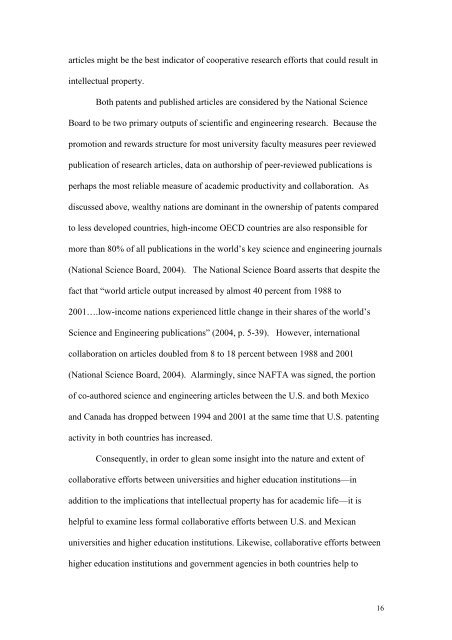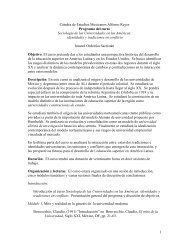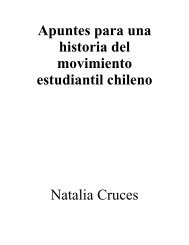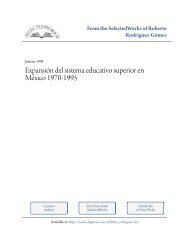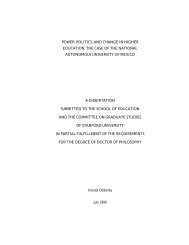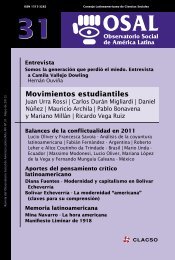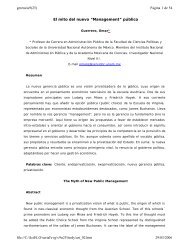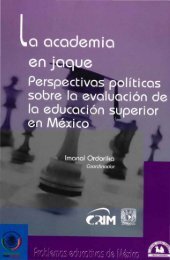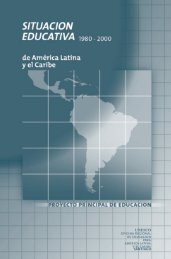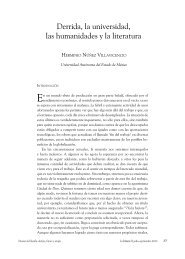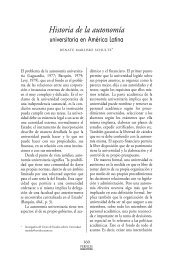intellectual property and the cultural aspects of collaboration
intellectual property and the cultural aspects of collaboration
intellectual property and the cultural aspects of collaboration
Create successful ePaper yourself
Turn your PDF publications into a flip-book with our unique Google optimized e-Paper software.
articles might be <strong>the</strong> best indicator <strong>of</strong> cooperative research efforts that could result in<strong>intellectual</strong> <strong>property</strong>.Both patents <strong>and</strong> published articles are considered by <strong>the</strong> National ScienceBoard to be two primary outputs <strong>of</strong> scientific <strong>and</strong> engineering research. Because <strong>the</strong>promotion <strong>and</strong> rewards structure for most university faculty measures peer reviewedpublication <strong>of</strong> research articles, data on authorship <strong>of</strong> peer-reviewed publications isperhaps <strong>the</strong> most reliable measure <strong>of</strong> academic productivity <strong>and</strong> <strong>collaboration</strong>. Asdiscussed above, wealthy nations are dominant in <strong>the</strong> ownership <strong>of</strong> patents comparedto less developed countries, high-income OECD countries are also responsible formore than 80% <strong>of</strong> all publications in <strong>the</strong> world’s key science <strong>and</strong> engineering journals(National Science Board, 2004). The National Science Board asserts that despite <strong>the</strong>fact that “world article output increased by almost 40 percent from 1988 to2001….low-income nations experienced little change in <strong>the</strong>ir shares <strong>of</strong> <strong>the</strong> world’sScience <strong>and</strong> Engineering publications” (2004, p. 5-39). However, international<strong>collaboration</strong> on articles doubled from 8 to 18 percent between 1988 <strong>and</strong> 2001(National Science Board, 2004). Alarmingly, since NAFTA was signed, <strong>the</strong> portion<strong>of</strong> co-authored science <strong>and</strong> engineering articles between <strong>the</strong> U.S. <strong>and</strong> both Mexico<strong>and</strong> Canada has dropped between 1994 <strong>and</strong> 2001 at <strong>the</strong> same time that U.S. patentingactivity in both countries has increased.Consequently, in order to glean some insight into <strong>the</strong> nature <strong>and</strong> extent <strong>of</strong>collaborative efforts between universities <strong>and</strong> higher education institutions—inaddition to <strong>the</strong> implications that <strong>intellectual</strong> <strong>property</strong> has for academic life—it ishelpful to examine less formal collaborative efforts between U.S. <strong>and</strong> Mexicanuniversities <strong>and</strong> higher education institutions. Likewise, collaborative efforts betweenhigher education institutions <strong>and</strong> government agencies in both countries help to16


